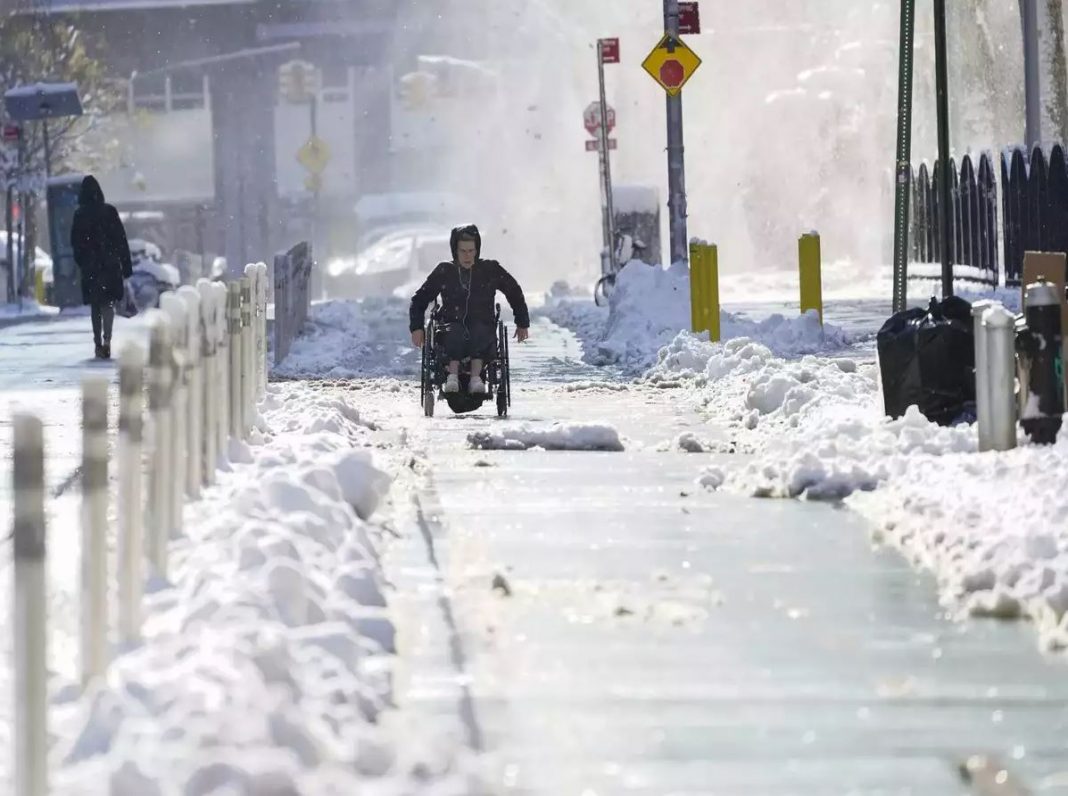As a result of the “bomb cyclone,” which covered the northeastern United States on Friday, several flights were cancelled, institutions were closed, and driving conditions were dangerous for many motorists.
According to meteorologists, the climatic phenomena is essentially a winter hurricane, which occurs when air pressure drops by at least 24 millibars in 24 hours, resulting in severe downpours and violent winds.
Kentucky, Nashville, and Tennessee were the first states to get snow, followed by Virginia and the Washington DC area, all before moving north along the Atlantic coast.
“When it quickly strengthens near to the shore, it has the potential to become a major storm for the east coast cities,” said Tom Kines, senior meteorologist at Accuweather, according to AFP.
340 flights have been cancelled as of 9:15 a.m. at LaGuardia Airport in New York City, according to the National Weather Service, which reported more than eight inches of snow there at the time (1415 GMT).
According to a tweet from the airport, the number of passengers was “anticipated to grow.”
Approximately 220 flights were cancelled at JFK International Airport in New York, while 250 flights were cancelled at Logan International Airport in Boston.
The National Weather Service (NWS) said that the greatest snowfall recorded to date was 18 inches in Cheektowaga, New York, which is located near the Canadian border in upstate New York.
Several inches of snow shuttered several schools in Massachusetts, but Eric Adams, the superintendent of public schools in New York City, kept public schools open despite the fact that ploughs were spread across the city.
“Children need to come back to school,” he said, referring to previous school closures caused by the coronavirus outbreak.
Governor Phil Murphy of New Jersey announced a state of emergency, prompting several teaching districts to proclaim Friday a “snow day.”
“We encourage all New Jerseyans to remain off the roadways, to keep informed, and to be safe,” Murphy posted on Twitter after the storm.
On Friday night, Meteorologist Kines predicted that the storm will move north, with freezing temperatures and high winds bringing “blizzard conditions” to parts of Nova Scotia and Newfoundland, Canada, as the storm moved north.
The National Weather Service (NWS) said that a winter storm warning was in effect in Maine.

